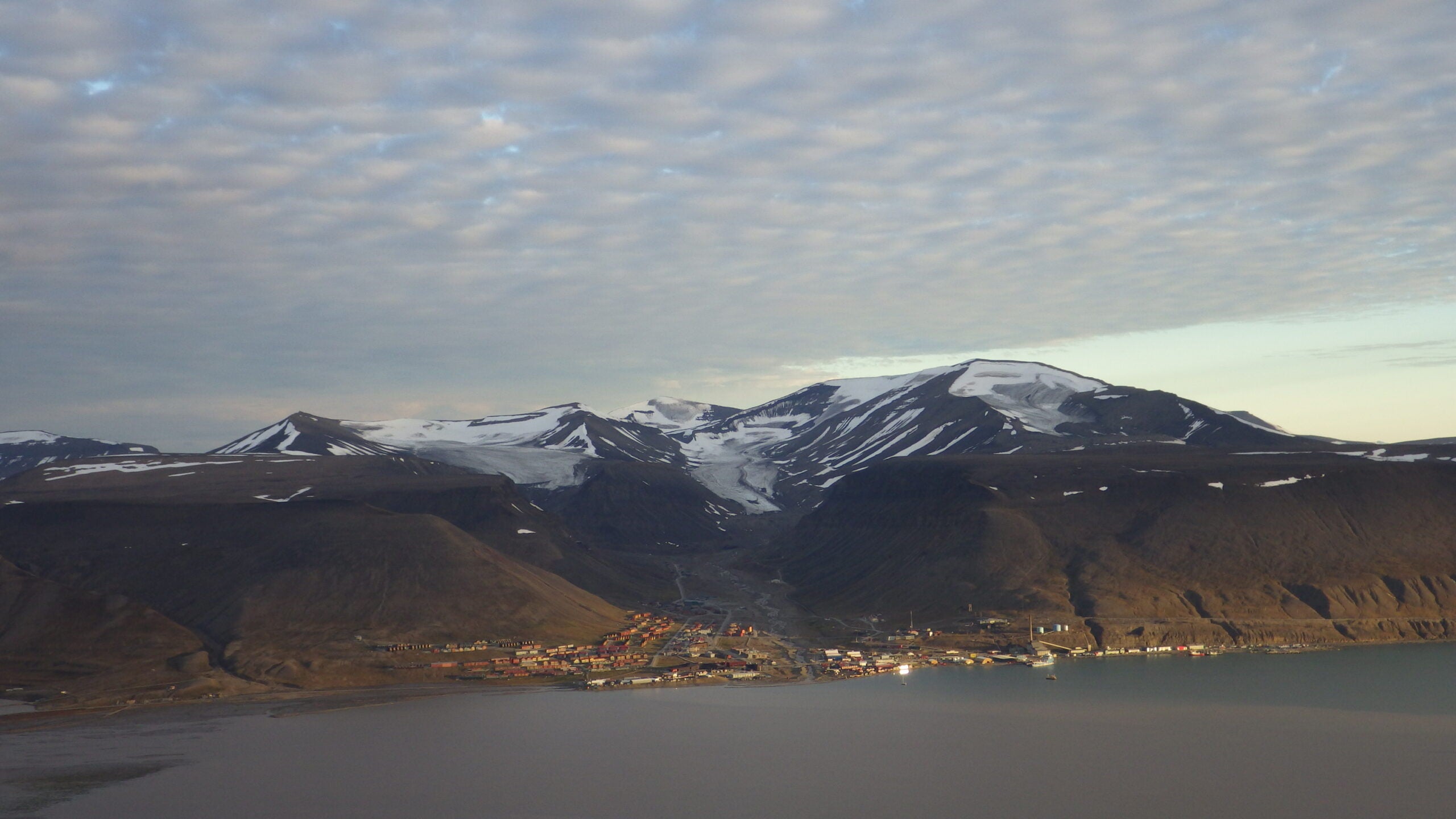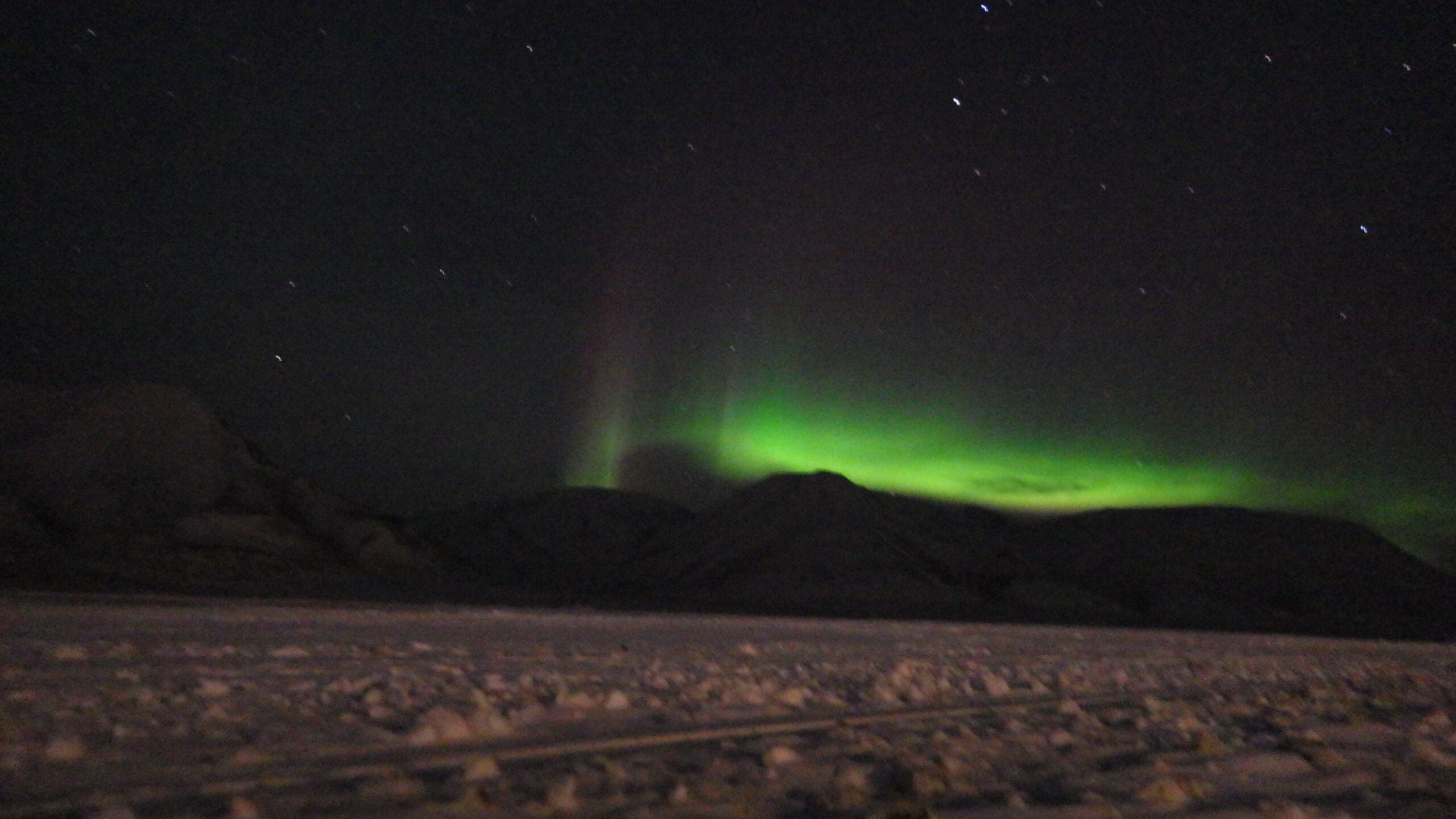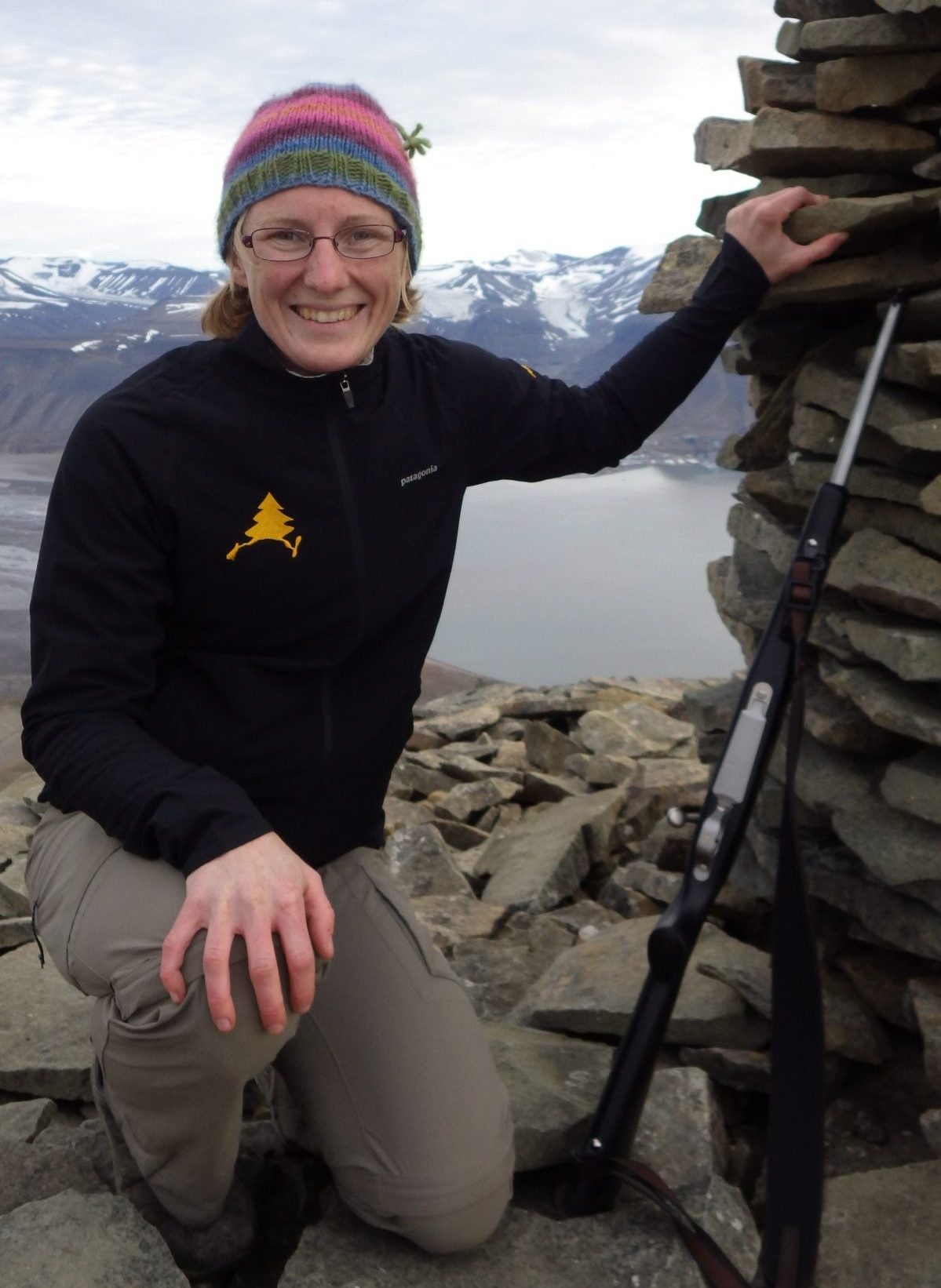NARRAGANSETT, R.I., Feb. 10, 2016—Alison Cleary spent six months at the top of the world recently studying what tiny crustaceans eat, kayaking in the light at midnight—and carrying a rifle to protect her from polar bears.
Cleary, who graduated from the University of Rhode Island’s Graduate School of Oceanography in May 2015 with a doctorate in oceanography, says the experience on the Norwegian island of Svalbard was thrilling.
“Svalbard is an incredibly beautiful place full of kind, interesting people,” she says. “Everyone in my biology group loved their research, and morning coffee time was full of talking about everything from science to skiing.”
At the University Centre in Svalbard, or UNIS, from July through December, she worked on analyzing data to better understand what Calanus glacialis copepods eat during the year.
Calanus glacialis are small crustaceans—a bit smaller than a raisin—that are crucial to Arctic ecosystems. They are important food for fish and even small seabirds. But they’re tiny, so their eating habits can be difficult to study. Cleary and her colleagues solved that problem by using new sequencing DNA tools to figure out what was in the copepods’ stomachs.

Photo by Alison Cleary.
First, researchers caught copepods in the wild and then preserved their stomach contents for analysis. Back in the lab, DNA from the copepods was extracted. Food the copepod ingested had different DNA from the copepod, so a special blocker—designed by GSO scientist Edward Durbin— was used to block the copepod DNA and sequence the other DNA.
DNA sequencing technology has improved greatly in recent years to allow researchers to easily get millions of sequences at once, she says. Once Cleary got the information, she compared it with a database to figure out which animal or plant each sequence came from—a process that determined what the copepods ate just before they were caught.
It was an especially compelling project, says Cleary, because she could examine eating habits over the entire year. In the summer in Svalbard the sun never sets for months, and in the winter it never rises for months. And much of the coastal sea is covered in solid ice, so animals have to survive in 24-hour light and constant darkness.

Photo by Alison Cleary.
Calanus copepods eat a lot of plant-like plankton, but since plants need light, there are few plant plankton in winter and early spring. Cleary wanted to know if Calanus also found things to eat during those months, and if so, what.
“We found that when a lot of plant plankton were around, the Calanus ate them. In the depths of winter there wasn’t much food we could detect in their stomachs,” she says. “In early spring and late summer—when they weren’t hibernating but there also weren’t very many plant plankton around to eat—the Calanus ate some animal plankton.”
Why is it important to know what Calanus eat? They are key in the food chain for many animals. Sadly, climate change is having a big impact on the polar regions, where there is less and less ice, Cleary says, and changes in the ice affect the amount of plant plankton.
“Understanding the things Calanus eat under different circumstances over the year will help us think about how Calanus will be affected by climate change,” she says. “And this has implications for how organisms that eat Calanus, and those even higher up the food chain, will fare.”
When she wasn’t doing her research, Cleary was enjoying the beauty of the island: crystal clear blue skies; majestic mountains; lush green Arctic tundra; and sparkling white glaciers and snow.
But living in the high Arctic is not without challenges, she says. Polar bears on the island made it unsafe to leave her small town of Longyearbyen (population 2,000) without a rifle: “Learning to shoot for self-defense against an attacking bear was a challenge. But you get used to carrying a rifle out hiking or skiing, and I never did see a bear.”
The months of constant light and darkness took some getting used, she says, although once she adjusted it was “freeing.”
“No need to schedule your activities around daylight,” she says. “One summer day we went kayaking until 1 in the morning. Winter skiing at 8 at night is just as nice as in the middle of the day.”
Her colleagues spoke English, but she also learned a little Norwegian. “Mostly I learned to read things in the grocery store and say “Jeg forstar ikke; snakker du engelsk?” (I don’t understand; do you speak English?)
Weekends were spent hiking in the mountains and observing wildlife—the small Svalbard reindeer, ptarmigans with their feathered feet, fluffy white Arctic foxes. She also witnessed the dancing lights of the aurora borealis.
Now the San Francisco native is on her next adventure—this one in England as a post-doctoral researcher at the Marine Biological Association of the United Kingdom, where she is working on single-celled plankton and free- floating DNA in the oceans.
“My favorite thing about my time in Norway was the wonderful people I got to work and hang out with,” she says. “It was a great experience and hopefully some day I’ll be back.”

